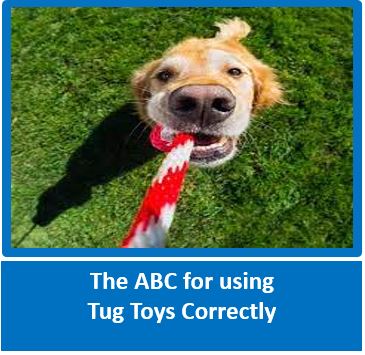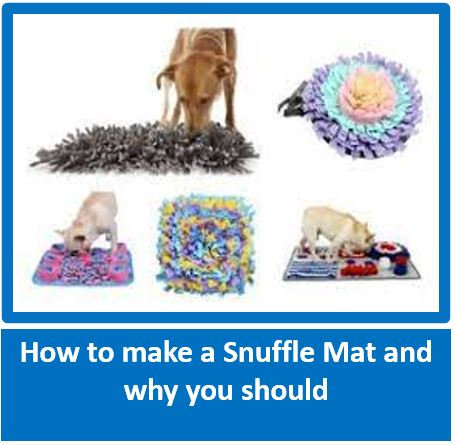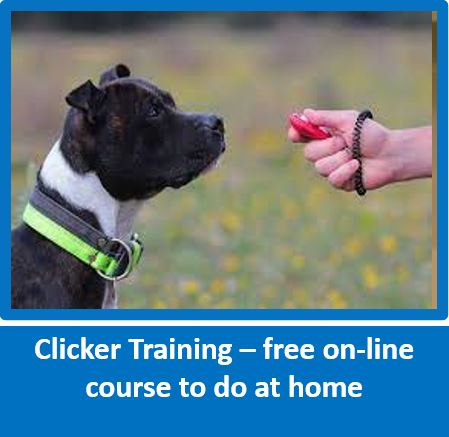
Whether you're looking for dog equipment, top quality toys, chew toys that can be stuffed, dental chews, chew for professional chewers, look no further - Mcmac can help. We don't just stop there, we have just about everything you want for your dog and cat, and we have not forgotten the small critters either! Items can be purchased either on-line or at one of our suppliers. www.mcmac.co.za
SOME SURPRISING DANGERS REGARDING DOG HARNESSES
www.petmd.com a really great website, with vet written and reviewed article on multiple topics - enjoy!
www.petmd.com a really great website, with vet written and reviewed article on multiple topics - enjoy!
Whether you already use a harness for your dog, or you’re considering making the switch from a traditional collar and leash, there’s plenty to take into consideration.
“There are many different types of harnesses available,” says Victoria Schade, a dog trainer and author based in Pennsylvania. “Some help curb a pulling habit, some are better for the comfort of the dog, and some are all about fashion over function.”
The risks and benefits of using a harness can depend on the type of harness, your dog’s breed and activity level, and your proper use of the device. Here’s what the experts have to say about dog harness safety.
Potential Risks of Dog Harnesses
If a harness doesn’t fit well and a dog pulls hard on his leash, there is some potential for a chest injury, says Dr. Susan C. Nelson, clinical professor at the Veterinary Health Center at Kansas State University.
A halter with a back clip, as opposed to a front clip, may be better for brachycephalic (short-nosed dogs), small breeds, and dogs with tracheal collapse or other tracheal issues. This is because front-clip harnesses may put too much pressure on the throat region when the dog pulls on the leash, Nelson says.
Schaede notes that a harness does not, by definition, decrease pulling unless it is specifically designed to address the problem.
Front-hook harnesses, on the other hand, can affect a dog’s natural gait and hinder shoulder movement. Nelson says these particular harnesses may not be a good choice for dogs who engage in athletic activities.
Harnesses that go around the muzzle, also known as a head halter, can present a unique challenge because few dogs easily adjust to them, Schade says. “Most do not enjoy the sensation and fight it by pawing at their nose, rolling on the ground, or rubbing their face on their person's leg,” she says. “Additionally, if the dog races ahead and is jerked back, it might injure its neck.”
Nelson agrees with this caution but notes that with proper training, head halters can work well for many dogs. “It allows them to have their head (thus eyes) redirected and focused on their owner for training,” she says.
Sleeping in a harness is potentially risky because it could get caught on something (like the dog’s crate) and become a choking hazard, Nelson adds. “It can also be uncomfortable for a harness to be on 24/7.”
In addition, pet parents should not leave a wet harness on their dog for a long period of time, as it can cause skin infection, advises Dr. Katie Grzyb, medical director at One Love Animal Hospital in Brooklyn, New York.
“Monitor hidden areas such as armpits and under the chest a few times a week to make sure that the harness is not causing skin irritation from rubbing,” Grzyb adds.
Choosing the Right Harness for Your Dog
A well-fitting harness won't gap, pull, chafe, or otherwise irritate the dog and will stay put with minimal movement as the dog walks, Schade says. A properly fitted harness also won't cause rolls of skin to bunch up around the dog’s neck or shoulders, which indicate that it is too tight. And when you take the harness off, you shouldn't see indentations in the fur where the harness sat, Schaede says.
Pet parents with barrel-chested dogs, like English Bulldogs, Boxers, and Pit Bulls, might have a tougher time finding a harness that fits properly. “Comfort is key when it comes to finding the right fit, and some harnesses either fit these breeds too tightly around the chest or shoulders or rub under the arms as the dog walks,” Schade says.
To ensure the fit is not too tight or too loose, you should be able to fit two fingers snugly between the harness and your dog, Grzyb says. If using a harness on a young, growing dog, Nelson recommends checking the fit frequently to be sure your puppy has not outgrown it.
Most standard harnesses don't require special training, but some dogs do need to acclimate when switching from a leash attached at the collar to a harness, Schade says.
This can be especially true if the harness is tricky to put on. “Pet parents can set themselves up to succeed by using treats to ease the process,” she says. “Reward the dog for standing calmly every step of the way as the harness is put on.”
The greatest risk of an ill-fitting harness is the dog slipping out of it during a walk, Schade says. Some dog body shapes don't mesh well with certain harness types. For example, your dog may be able to wiggle out if he has a deep chest (think Great Danes or Dobermans) and the shoulder-to-chest ratio on the harness creates too much slack. Some no-pull harnesses have a design flaw in which the chest piece slips down when the leash is taut, which means a determined puller can slip free, Schade says.
For this reason, your dog should always wear identification tags, especially if he’s an escape artist. “In general, it is still better for dogs to wear a collar with some type of identification, in case they get lost,” Nelson says. Pet parents who are worried about the risk of their dog getting hung up by his collar can purchase one with a breakaway feature.
“There are many different types of harnesses available,” says Victoria Schade, a dog trainer and author based in Pennsylvania. “Some help curb a pulling habit, some are better for the comfort of the dog, and some are all about fashion over function.”
The risks and benefits of using a harness can depend on the type of harness, your dog’s breed and activity level, and your proper use of the device. Here’s what the experts have to say about dog harness safety.
Potential Risks of Dog Harnesses
If a harness doesn’t fit well and a dog pulls hard on his leash, there is some potential for a chest injury, says Dr. Susan C. Nelson, clinical professor at the Veterinary Health Center at Kansas State University.
A halter with a back clip, as opposed to a front clip, may be better for brachycephalic (short-nosed dogs), small breeds, and dogs with tracheal collapse or other tracheal issues. This is because front-clip harnesses may put too much pressure on the throat region when the dog pulls on the leash, Nelson says.
Schaede notes that a harness does not, by definition, decrease pulling unless it is specifically designed to address the problem.
Front-hook harnesses, on the other hand, can affect a dog’s natural gait and hinder shoulder movement. Nelson says these particular harnesses may not be a good choice for dogs who engage in athletic activities.
Harnesses that go around the muzzle, also known as a head halter, can present a unique challenge because few dogs easily adjust to them, Schade says. “Most do not enjoy the sensation and fight it by pawing at their nose, rolling on the ground, or rubbing their face on their person's leg,” she says. “Additionally, if the dog races ahead and is jerked back, it might injure its neck.”
Nelson agrees with this caution but notes that with proper training, head halters can work well for many dogs. “It allows them to have their head (thus eyes) redirected and focused on their owner for training,” she says.
Sleeping in a harness is potentially risky because it could get caught on something (like the dog’s crate) and become a choking hazard, Nelson adds. “It can also be uncomfortable for a harness to be on 24/7.”
In addition, pet parents should not leave a wet harness on their dog for a long period of time, as it can cause skin infection, advises Dr. Katie Grzyb, medical director at One Love Animal Hospital in Brooklyn, New York.
“Monitor hidden areas such as armpits and under the chest a few times a week to make sure that the harness is not causing skin irritation from rubbing,” Grzyb adds.
Choosing the Right Harness for Your Dog
A well-fitting harness won't gap, pull, chafe, or otherwise irritate the dog and will stay put with minimal movement as the dog walks, Schade says. A properly fitted harness also won't cause rolls of skin to bunch up around the dog’s neck or shoulders, which indicate that it is too tight. And when you take the harness off, you shouldn't see indentations in the fur where the harness sat, Schaede says.
Pet parents with barrel-chested dogs, like English Bulldogs, Boxers, and Pit Bulls, might have a tougher time finding a harness that fits properly. “Comfort is key when it comes to finding the right fit, and some harnesses either fit these breeds too tightly around the chest or shoulders or rub under the arms as the dog walks,” Schade says.
To ensure the fit is not too tight or too loose, you should be able to fit two fingers snugly between the harness and your dog, Grzyb says. If using a harness on a young, growing dog, Nelson recommends checking the fit frequently to be sure your puppy has not outgrown it.
Most standard harnesses don't require special training, but some dogs do need to acclimate when switching from a leash attached at the collar to a harness, Schade says.
This can be especially true if the harness is tricky to put on. “Pet parents can set themselves up to succeed by using treats to ease the process,” she says. “Reward the dog for standing calmly every step of the way as the harness is put on.”
The greatest risk of an ill-fitting harness is the dog slipping out of it during a walk, Schade says. Some dog body shapes don't mesh well with certain harness types. For example, your dog may be able to wiggle out if he has a deep chest (think Great Danes or Dobermans) and the shoulder-to-chest ratio on the harness creates too much slack. Some no-pull harnesses have a design flaw in which the chest piece slips down when the leash is taut, which means a determined puller can slip free, Schade says.
For this reason, your dog should always wear identification tags, especially if he’s an escape artist. “In general, it is still better for dogs to wear a collar with some type of identification, in case they get lost,” Nelson says. Pet parents who are worried about the risk of their dog getting hung up by his collar can purchase one with a breakaway feature.




